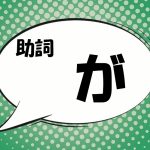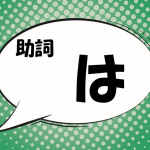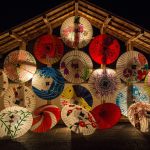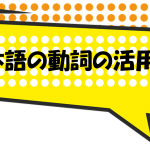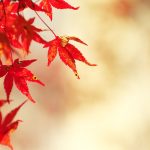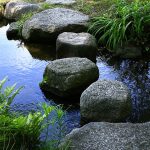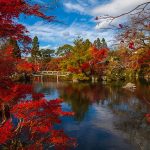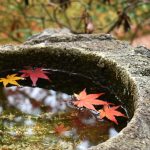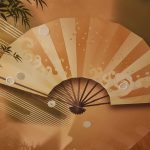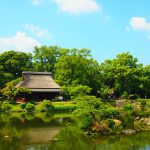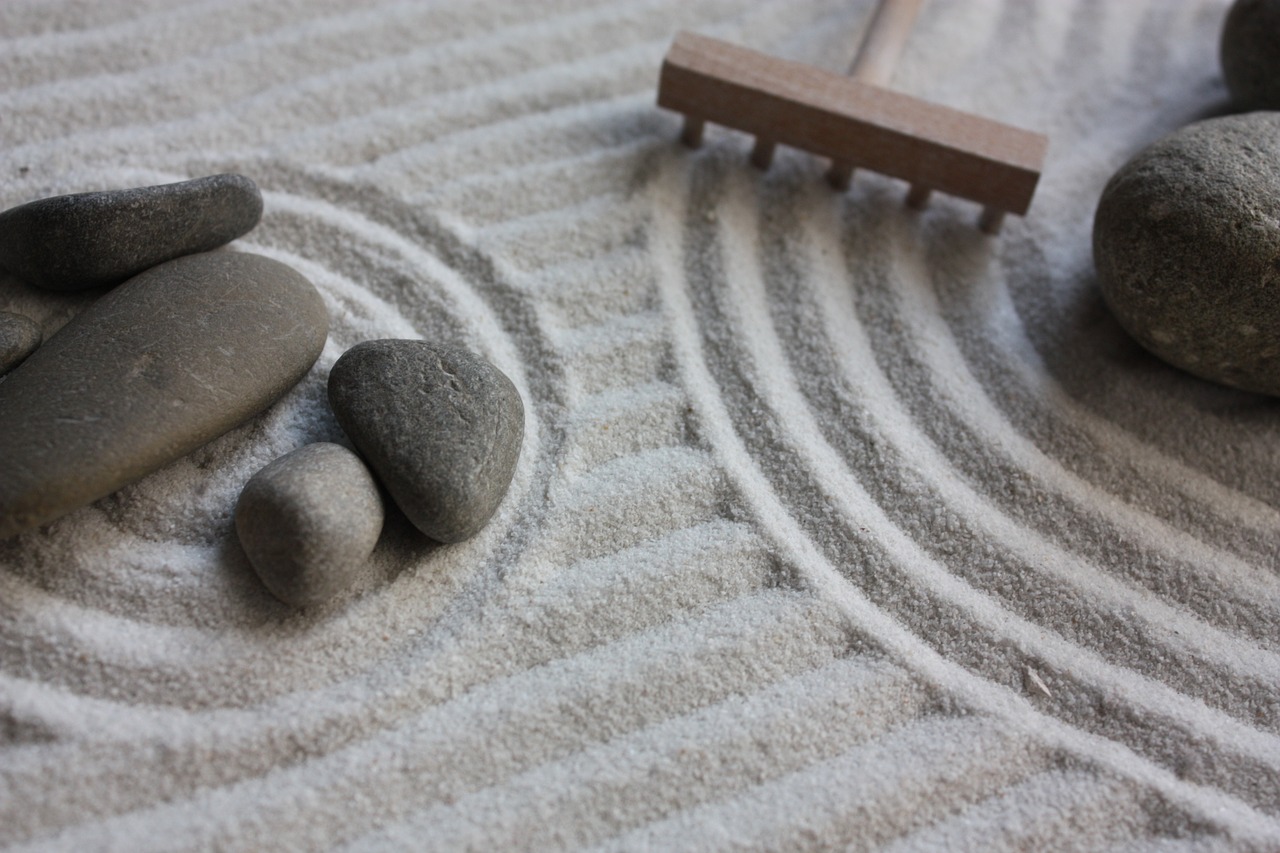
目次
Why Japanese have two different types of adjective
Since Japanese has borrowed a large vocabulary from Chinese, there are two types of adjectives in Japanese. They can be called independent adjective and dependent adjective. Independent adjectives are native Japanese origin, and dependent adjectives are usually Chinese origin.
Difference between two types of Japanese adjectives
Basically adjectives are used to describe a noun. In Japanese adjectives are closely related to verbs and they can be used as a verb.
In Japanese, when adjectives describe a noun, adjectives are always put before a noun in the similar way as English does.
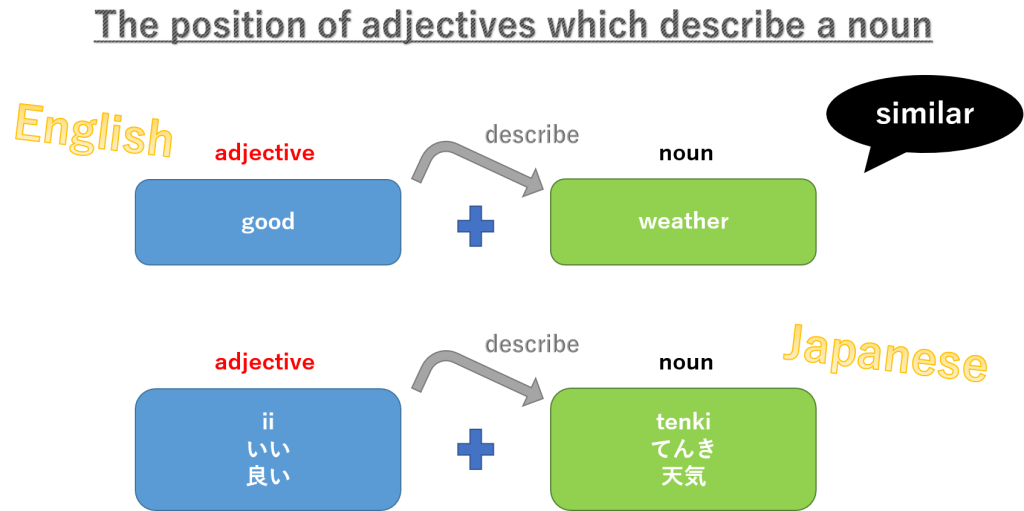
Dependent adjectives require a suffix to do its role of adjective. Also they require an auxiliary verb to do its role as a verb. The suffix of "na/な" is added to the end of dependent adjectives when they come before the noun they are describing. The auxiliary verb "da/だ" or "desu/です" is placed after dependent adjectives when they do the role as a verb. Both "da/だ" and "desu/です" have the meaning of "to be." "desu/です" is more polite than "da/だ."
Independent adjectives don't require any suffixes or any auxiliary verbs to do its role of adjective or verb. Each independent adjective is considered to have a part of the verb "to be" within it.
Example of adjectives preceding nouns
<independent adjective example 1>
shiroi hana
しろい はな
白い 花
white flower
<dependent adjective example 1>
kireina hana
きれいな はな
綺麗な 花
beautiful flower
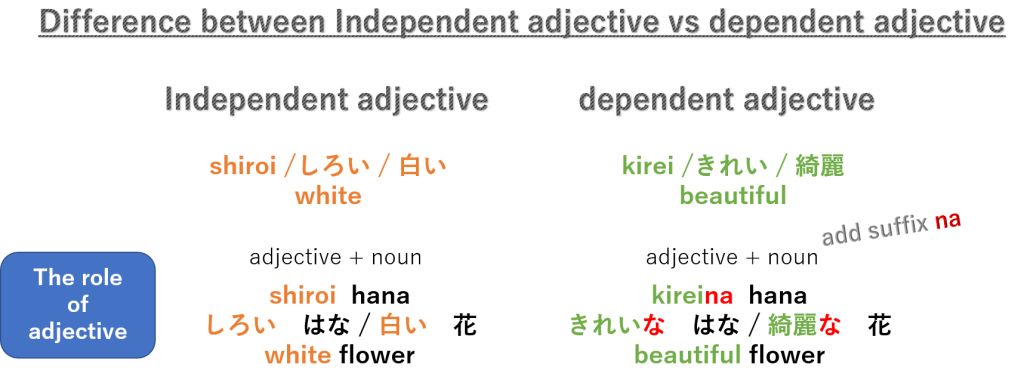
Here, the independent adjective "shiroi/しろい" which is placed before the noun describes the noun "hana/はな." The suffix "na/な" is added to the independent adjective "kirei/きれい" when it describes a noun.
Example of adjectives which work as a verb
<independent adjective example 2>
Kono hana wa shiroi
この はな は しろい
この 花 は 白い
[this flower wa/は white]
This flower is white.
<dependent adjective example 2>
Kono hana wa kirei da
この はな は きれい だ
この 花 は 綺麗 だ
[this flower は/wa beautiful is]
This flower is beautiful.

The independent adjective "shiroi/しろい" have the meaning of "to be." It can be a verb to place it to the position of the verb. The auxiliary verb "da/だ" is added to the independent adjective "kirei/きれい" to use it as a verb. In speaking, however, the auxiliary verb "da/だ" is often removed. So you can say "Kono hana wa kirei."
How to identify adjective types
All independent adjectives end with the sound i. That is, adjectives that don’t end with the sound i are all dependent adjective.
If the final sound of an adjective is i, however, it is not possible to tell from the adjective to which type an adjective belongs. This is because some of dependent adjectives have the final sound i. So, you need to memorize type of each adjective for them.
Let’s learn type of adjectives that are end with the sound i.
| independent adjective | ||
| Japanese | English | |
| 1 | ii(yoi) / よい / 良い | good |
| 2 | warui / わるい / 悪い | bad |
| 3 | hayai / はやい / 早い | fast |
| 4 | osoi / おそい / 遅い | slow |
| 5 | furui / ふるい / 古い | old |
| 6 | atarashii / あたらしい / 新しい | new |
| 7 | shiroi / しろい / 白い | white |
| dependent adjective | ||
| Japanese | English | |
| 1 | kirei(kiree) / きれい / 綺麗 | beautiful |
| 2 | benri / べんり / 便利 | useful |
| 3 | shizuka / しずか / 静か | quiet |
| 4 | shiawase / しあわせ / 幸せ | happy |
| 5 | suteki / すてき / 素敵 | nice |
| 6 | taisetsu / たいせつ / 大切 | important |
Adverbial Forms
Adverbs are normally made from adjectives.
How to make an adverbial form of independent adjective
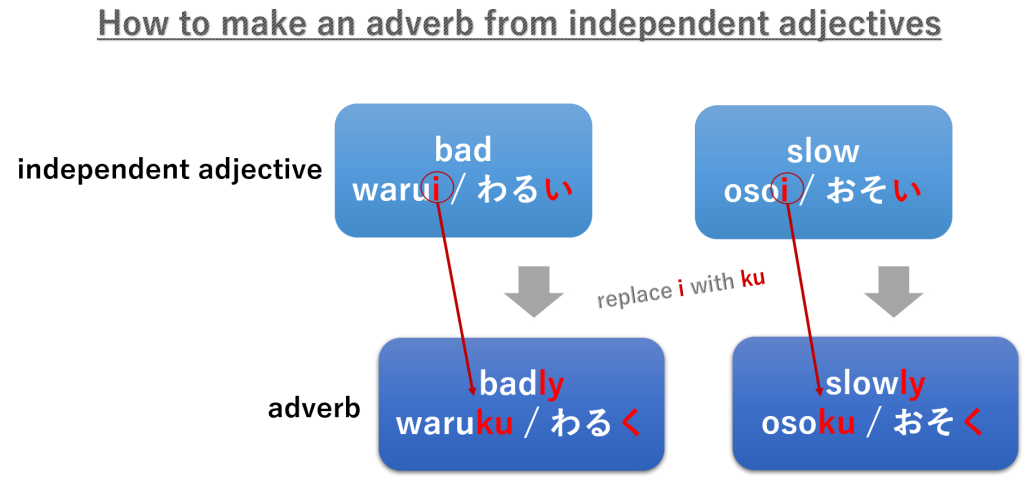
Adverbs are made by changing the final "i/い" of the independent adverb to "ku/く." Here, the adverb "waruku/わるく" is made from the adjective "warui/わるい" by changing the final "i/い" to "ku/く." The adverb "osoku/おそく" is made from the adjective "osoi/おそい" by changing the final "i/い" to "ku/く."
How to make an adverbial form of dependent adjective

Adverbs are made by adding suffix to the dependent adverb in the same way with English. Suffix "ni/に" is added to it in Japanese. Here, the adverb "kireini/きれいに" is made from the adjective "kirei/きれい" by adding suffix "ni/に" to the end. The adverb "osoku/おそく" is made from the adjective "osoi/おそい" by adding suffix "ni/に" to the end.
Past forms
How to make past forms of independent adjectives
Independent adjectives will conjugate based on their tense. Each independent adjective is considered to have a part of the verb “to be” within it. That is why independent adjectives have past tense. Independent adjectives form a past tense by replacing the final "i/い" with "katta/かった."
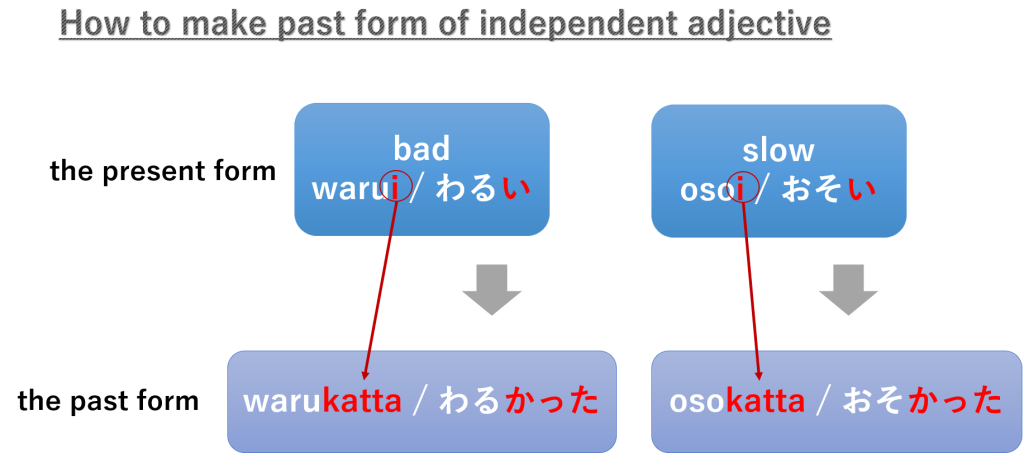
Here, the past form "warukatta/わるかった" is made from "warui/わるい" by replacing the final "i/い" with "katta/かった." The past form of "osoi/おそい" is "osokatta/おそかった."
Let's look at some past forms of independent adjectives.
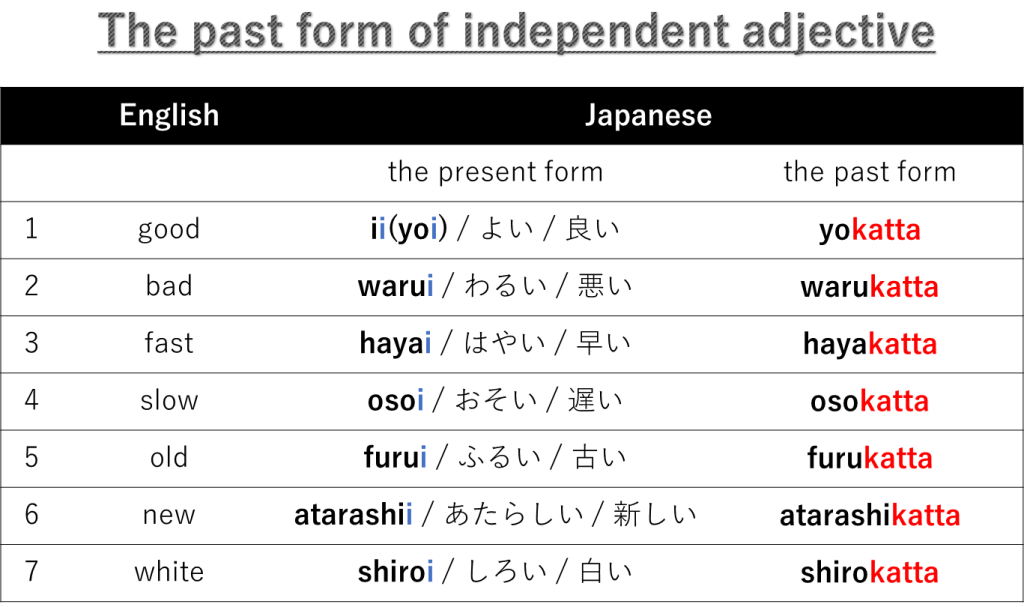
How to express past using independent adjectives
Dependent adjectives require the auxiliary verb "da/だ" or "desu/です" immediately after them to do its role as a verb. The past form of the auxiliary verb "da/だ" is "datta/だった." The past form of the auxiliary verb "desu/です" is "deshita/でした."
To express past add "datta/だった" or "deshita/でした" after independent adjectives.
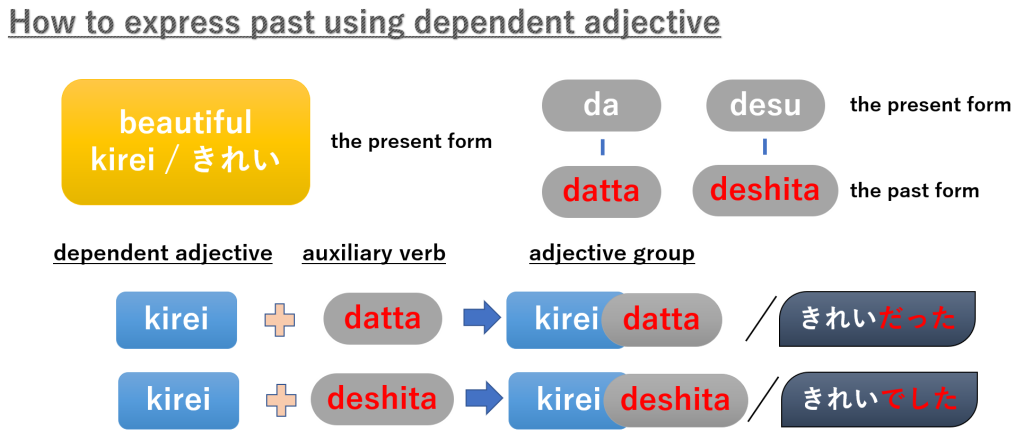
Here, "datta/だった" or "deshita/でした" is added after "kirei/きれい" to express the past.
You may also like
https://jpgrammar.com/verbforms/
